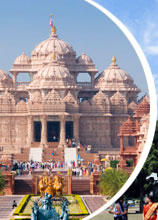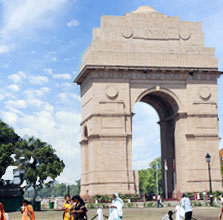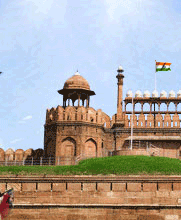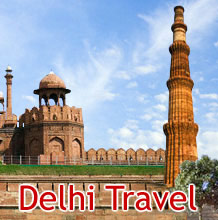 Since
the city of Delhi has served as the capital of many empires, several
forts were built over a period of time. However, most of the forts in
Delhi were constructed during the rule of the Mughals over the city.
These strong citadels were constructed both for the purpose of defense
as well as residence. Forts of New Delhi boast of splendid architecture
and are aesthetically magnificent. Following is a list of the famous
forts in Delhi, the capital of India:
Since
the city of Delhi has served as the capital of many empires, several
forts were built over a period of time. However, most of the forts in
Delhi were constructed during the rule of the Mughals over the city.
These strong citadels were constructed both for the purpose of defense
as well as residence. Forts of New Delhi boast of splendid architecture
and are aesthetically magnificent. Following is a list of the famous
forts in Delhi, the capital of India:Red Fort
The Red Fort of Delhi is a massive monument built by the Mughal Emperor Shah Jahan. It took approximately 10 years to complete the Red Fort of Delhi that was started in the year 1638. Situated on the embankment of river Yamuna, the fort was constructed during the zenith of Mughal Empire. The Red fort was supposed to be the fortress of the Shah Jahan's new capital at Delhi, Shahjahanabad. Today, the Red fort serves as the venue for the Prime Minister's Speech that is given on the Independence Day of the country.
Old Fort
Old Fort of Delhi is believed to be situated on the same site where the city of Indraprastha once stood. As per the great Indian epic Mahabharta, Indraprastha was the capital city of the Pandavas. Now standing mostly in ruins, the Old Fort of Delhi once served as the seat of administration of a number of glorious emperors. Emperor Sher Shah Suri got the fort constructed after he demolished Humayun's city, Dinpanah. Also known as the Purana Quila, the Old fort is more or less rectangular in shape, with a course of nearly two km. The legend has it that Sher Shah could not complete the construction of Purana Quila during is lifetime.
Tughlaqabad Fort
Tughlaqabad Fort, perched on a rocky hill, constitutes one third of the capital city of India. The fort is located on the Qutab-Badarpur Road and was built by Ghiyas-ud-Din Tughlaq, the founder of the Tughlaq dynasty. The Tuglaqabad Fort seems to be more or less octagonal, with a border of approximately 6.5-km. The ramparts of the fort, now in ruins, are between 10m to 15m high with fortresses and gateways at intervals. The Tughlakhabad at Delhi was built to serve a dual purpose, one of providing a defensive structure to the ruler and the second, to serve as his imposing capital.









